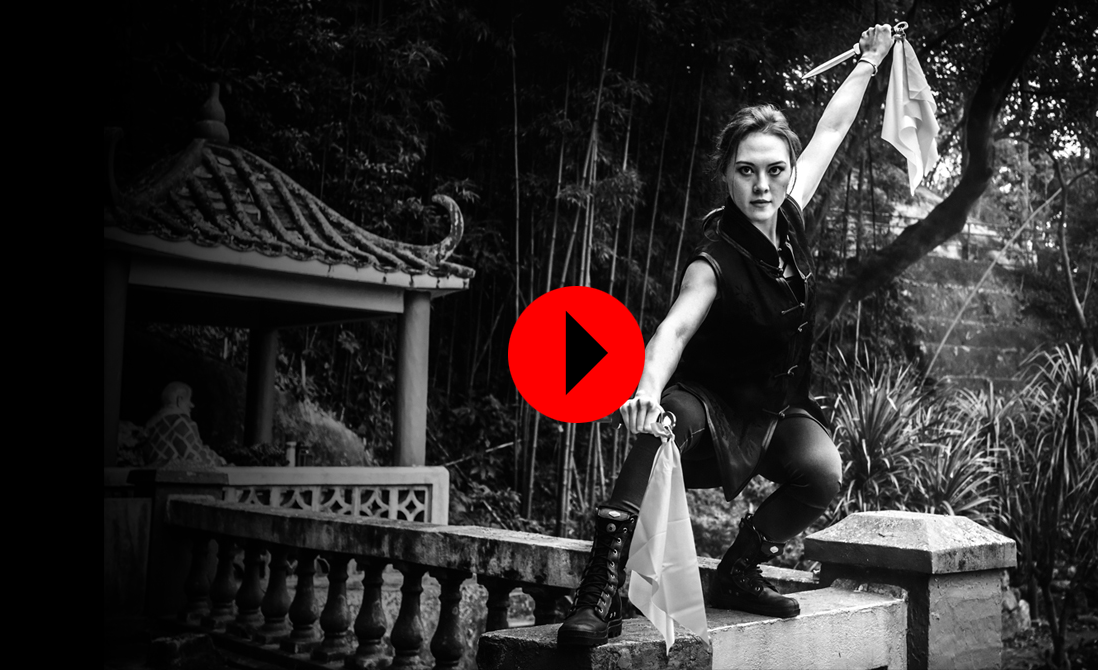Weapon Training The Hung Gar style can be traced back to the warfare that raged between different factions at the time of the demise of the Shaolin Buddhist temple. As with other traditional Martial Arts, weapon training is a vital part of the repertoire and students must learn to handle each weapon competently and understand the full range of its potential uses in combat. Martial Arts weapons can be categorised in several different ways
1. Military or improvised
2. Bladed or non-bladed
3. Short-range or long-range.
As the name suggests, military weapons were specifically designed to assist in combat (such as swords, daggers and spears) while improvised weapons are basically everyday implements that were snatched up on the spur of the moment for attack or defence. Bladed weapons would have been used to cut, slice or puncture while the non-bladed weapons were for bludgeoning, clubbing or stunning an attacker. The weapon’s range would vary between those that could be used at close-quarter, such as swords, and those that needed to be wielded from a distance, such as the Tiger Fork.
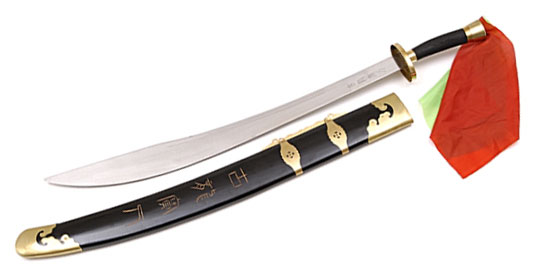 1. The Broadsword The Broadsword is a single-edged Chinese sword with a wider blade than a regular Gim sword that is used for slashing and chopping.
1. The Broadsword The Broadsword is a single-edged Chinese sword with a wider blade than a regular Gim sword that is used for slashing and chopping.
 2. The Fan The Fan was first used as a weapon by the Japanese, whose war fans were made from wooden or iron ribs. (In the Japanese folk story about the origin of the war fan, the hero Yoshitsune was taught to use an iron fan by the same mythological creature who had trained him to use a sword). Legend has it that skilled users could defend themselves against a sword attack using their fans, or kill an aggressor with a single blow. They would also use the fan in one hand while wielding a sword in the other, so as they attacked (with the sword) they could also use the fan to swat away knives or incoming poisoned darts.
2. The Fan The Fan was first used as a weapon by the Japanese, whose war fans were made from wooden or iron ribs. (In the Japanese folk story about the origin of the war fan, the hero Yoshitsune was taught to use an iron fan by the same mythological creature who had trained him to use a sword). Legend has it that skilled users could defend themselves against a sword attack using their fans, or kill an aggressor with a single blow. They would also use the fan in one hand while wielding a sword in the other, so as they attacked (with the sword) they could also use the fan to swat away knives or incoming poisoned darts.
 3. The Butterfly Knives Each Butterfly Knife is shaped like a butcher’s cleaver. It has a fairly wide blade with a single cutting edge and is secured between two hinged guards that open like butterfly wings and allow the user to spin the blade into different positions, as required during combat. The knife is held in the hand and used for close-quarter fighting (within the radius of the extended arm) so the blade itself should not be much longer than the forearm. Butterfly Knives are used in pairs but usually stored together in a single scabbard. They are easily concealed in pockets, sleeves or boots and can be extracted and opened quickly for a surprise attack. The basic movements of Butterfly Sword combat are an extension of the empty-handed combat movements, with the swords themselves used for slashing and stabbing in the ratio of 80% slashing to 20% stabbing.
3. The Butterfly Knives Each Butterfly Knife is shaped like a butcher’s cleaver. It has a fairly wide blade with a single cutting edge and is secured between two hinged guards that open like butterfly wings and allow the user to spin the blade into different positions, as required during combat. The knife is held in the hand and used for close-quarter fighting (within the radius of the extended arm) so the blade itself should not be much longer than the forearm. Butterfly Knives are used in pairs but usually stored together in a single scabbard. They are easily concealed in pockets, sleeves or boots and can be extracted and opened quickly for a surprise attack. The basic movements of Butterfly Sword combat are an extension of the empty-handed combat movements, with the swords themselves used for slashing and stabbing in the ratio of 80% slashing to 20% stabbing.
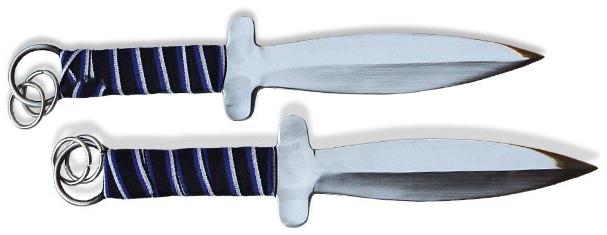 4. The Double Daggers Daggers were traditionally back-up weapons that were taken onto the battlefield and only used if the main weapon (usually a sword) broke. They would not have been the primary weapon of choice because they are so short that they have very little range: you can only use them for close-up fighting. They are not very good as defensive weapons either, as their small size makes it difficult to block any other weapons with them. In fact they are also only useful for stabbing and slashing, with stabbing being the more deadly technique. In traditional Martial Arts, the daggers are used in pairs (Double Daggers) and gripped in both hands with the blades angled down. The arms are then whirled in coordinated circling motions which ensures that one of the daggers is always on its way either forwards or down (while the other is being drawn back or up) and therefore ready to stab.
4. The Double Daggers Daggers were traditionally back-up weapons that were taken onto the battlefield and only used if the main weapon (usually a sword) broke. They would not have been the primary weapon of choice because they are so short that they have very little range: you can only use them for close-up fighting. They are not very good as defensive weapons either, as their small size makes it difficult to block any other weapons with them. In fact they are also only useful for stabbing and slashing, with stabbing being the more deadly technique. In traditional Martial Arts, the daggers are used in pairs (Double Daggers) and gripped in both hands with the blades angled down. The arms are then whirled in coordinated circling motions which ensures that one of the daggers is always on its way either forwards or down (while the other is being drawn back or up) and therefore ready to stab.
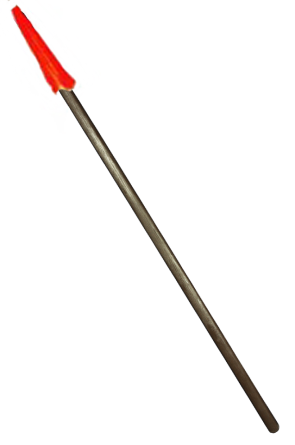 5. The Fifth Brother Eight Diagram Pole Legend has it that Yeung Yip and his seven sons (all elite spear fighters who served the Song dynasty) were trapped at Golden Beach by an army fighting for the Liao dynasty. While Yeung Yip and five of his sons were either killed or captured in the ambush, his fifth and sixth son escaped. The fifth son took refuge in a Buddhist monastery where blades were not allowed. He therefore continued to practice his sword skills using a pole, and so gave the Martial Arts a new weapon for its armoury.
5. The Fifth Brother Eight Diagram Pole Legend has it that Yeung Yip and his seven sons (all elite spear fighters who served the Song dynasty) were trapped at Golden Beach by an army fighting for the Liao dynasty. While Yeung Yip and five of his sons were either killed or captured in the ambush, his fifth and sixth son escaped. The fifth son took refuge in a Buddhist monastery where blades were not allowed. He therefore continued to practice his sword skills using a pole, and so gave the Martial Arts a new weapon for its armoury.
 6. The Umbrella The Umbrella is another improvised weapon. However this one may have been discovered inadvertently during a drinking session, when a Japanese Martial Artist was challenged to use his umbrella as a sword. Once those involved had sobered up they realised they had stumbled upon an as-yet-undiscovered weapon that could be used to stab and swipe when needed.
6. The Umbrella The Umbrella is another improvised weapon. However this one may have been discovered inadvertently during a drinking session, when a Japanese Martial Artist was challenged to use his umbrella as a sword. Once those involved had sobered up they realised they had stumbled upon an as-yet-undiscovered weapon that could be used to stab and swipe when needed.
 7. The Gim Straight Sword A Gim is the traditional double-edged straight sword that has been used in Chinese Martial Arts since the 7th Century BC. The blade length ranges from 45cm to 80cm (depending on the individual’s arm length) and an average 70 cm sword weighs around 88g so while substantial it can still be used one-handed..
7. The Gim Straight Sword A Gim is the traditional double-edged straight sword that has been used in Chinese Martial Arts since the 7th Century BC. The blade length ranges from 45cm to 80cm (depending on the individual’s arm length) and an average 70 cm sword weighs around 88g so while substantial it can still be used one-handed..
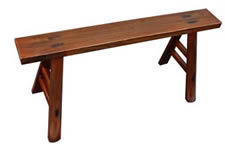 8. Pun long Dang The bench is another improvised weapon. Hundreds of years ago it was very common to find small wooden benches in restaurants and homes all over China. They were light enough to pick up without too much effort but dense enough to provide some protection against the weapons of the day, so they could be useful when needed in a hurry for blocking and striking.
8. Pun long Dang The bench is another improvised weapon. Hundreds of years ago it was very common to find small wooden benches in restaurants and homes all over China. They were light enough to pick up without too much effort but dense enough to provide some protection against the weapons of the day, so they could be useful when needed in a hurry for blocking and striking.
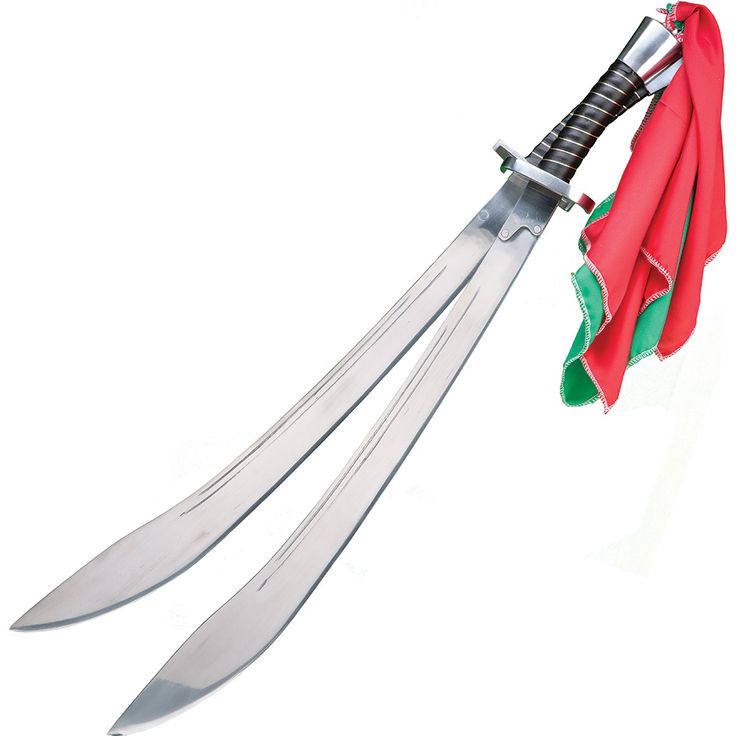 9. The Double Broadsword When practitioners use two Broadswords together they are referred to as the Double Broadsword. Doubling up on the weapons makes them even more effective as it gives the fighter twice the cutting power. However it is much harder to train to use two swords together as the student has to practice using one of the swords in the unfavoured hand (that is, in the left hand if the person is right-handed).
9. The Double Broadsword When practitioners use two Broadswords together they are referred to as the Double Broadsword. Doubling up on the weapons makes them even more effective as it gives the fighter twice the cutting power. However it is much harder to train to use two swords together as the student has to practice using one of the swords in the unfavoured hand (that is, in the left hand if the person is right-handed).
 10. The Spear was an easy weapon to make and therefore in common use in ancient China. The shaft of the spear could be up to 2 metres long (or less for a shorter user) and made from a waxy wood that was both strong and flexible. A leaf shaped blade was attached at one end with a bright red horse tassel lashed above it. When the Spear was waved or thrust, the tassel would make it difficult for the victim to see exactly where the blade was and therefore harder for them to block or grab. The tassel would also have mopped up any blood that ended up on the blade and prevented it from running along the wooden shaft and making it too sticky or slippery to hold firmly.
10. The Spear was an easy weapon to make and therefore in common use in ancient China. The shaft of the spear could be up to 2 metres long (or less for a shorter user) and made from a waxy wood that was both strong and flexible. A leaf shaped blade was attached at one end with a bright red horse tassel lashed above it. When the Spear was waved or thrust, the tassel would make it difficult for the victim to see exactly where the blade was and therefore harder for them to block or grab. The tassel would also have mopped up any blood that ended up on the blade and prevented it from running along the wooden shaft and making it too sticky or slippery to hold firmly.
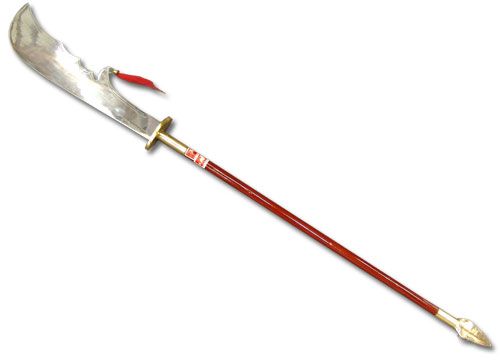 11. The Guandao The Guandao is a pole weapon which, according to legend, was created by General Guan Yu in the third century AD as a fitting weapon for a man of his extraordinary size and strength. The original design consisted of a spiked blade on top of a six foot metal pole counterbalanced by a pointed spear, making it very heavy and unwieldy. The modern Guandao is shorter and made of wood, so it is lighter (no more than 10kg) and therefore a bit more practical for martial arts. As a weapon the Guandao is used to disarm opponents, to deflect oncoming strikes and for attack. In attack mode the weight of the weapon means that the bearer has to use large sweeping and slashing movements to maintain momentum and keep the blade moving.
11. The Guandao The Guandao is a pole weapon which, according to legend, was created by General Guan Yu in the third century AD as a fitting weapon for a man of his extraordinary size and strength. The original design consisted of a spiked blade on top of a six foot metal pole counterbalanced by a pointed spear, making it very heavy and unwieldy. The modern Guandao is shorter and made of wood, so it is lighter (no more than 10kg) and therefore a bit more practical for martial arts. As a weapon the Guandao is used to disarm opponents, to deflect oncoming strikes and for attack. In attack mode the weight of the weapon means that the bearer has to use large sweeping and slashing movements to maintain momentum and keep the blade moving.
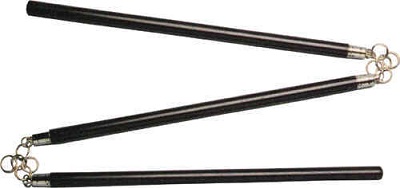 12. The Three Section staff The Three Section Staff is a highly versatile weapon as it can be used at close-quarters for poking or striking, as a trapping weapon and as a whip. It is also useful when you need to preserve the element of surprise as it can be folded down and concealed. According to legend, the Three Section Staff was developed as a result of an incident involving Chao Hong-Yin, a Martial Arts expert who went on to become the first Emperor of the Sung Dynasty. Chao often worked as a bodyguard and once he was attacked by bandits while protecting a royal client. During the fight he struck one of the bandits on the back of his head and his staff broke into two unequal pieces. Chao took the two pieces to a blacksmith and asked him to attach the longer piece to the shorter one with an iron ring. In a later fight the longer section was broken, and the blacksmith once again reassembled the weapon as three linked pieces of equal length.
12. The Three Section staff The Three Section Staff is a highly versatile weapon as it can be used at close-quarters for poking or striking, as a trapping weapon and as a whip. It is also useful when you need to preserve the element of surprise as it can be folded down and concealed. According to legend, the Three Section Staff was developed as a result of an incident involving Chao Hong-Yin, a Martial Arts expert who went on to become the first Emperor of the Sung Dynasty. Chao often worked as a bodyguard and once he was attacked by bandits while protecting a royal client. During the fight he struck one of the bandits on the back of his head and his staff broke into two unequal pieces. Chao took the two pieces to a blacksmith and asked him to attach the longer piece to the shorter one with an iron ring. In a later fight the longer section was broken, and the blacksmith once again reassembled the weapon as three linked pieces of equal length.
 13. The Tiger Fork The Tiger Fork is an ancient trident that was used in Southern China to kill tigers. The Tiger Fork would have been carried and used on the ground, as it was too long and too heavy to be wielded by anyone on horseback. As a Martial Arts weapon, the Tiger Fork can be used to strike, poke and cut. It can also act as a temporary strut to provide support during a turn, for example, and in a spiralling motion to catch and entangle an attacker’s weapon.
13. The Tiger Fork The Tiger Fork is an ancient trident that was used in Southern China to kill tigers. The Tiger Fork would have been carried and used on the ground, as it was too long and too heavy to be wielded by anyone on horseback. As a Martial Arts weapon, the Tiger Fork can be used to strike, poke and cut. It can also act as a temporary strut to provide support during a turn, for example, and in a spiralling motion to catch and entangle an attacker’s weapon.
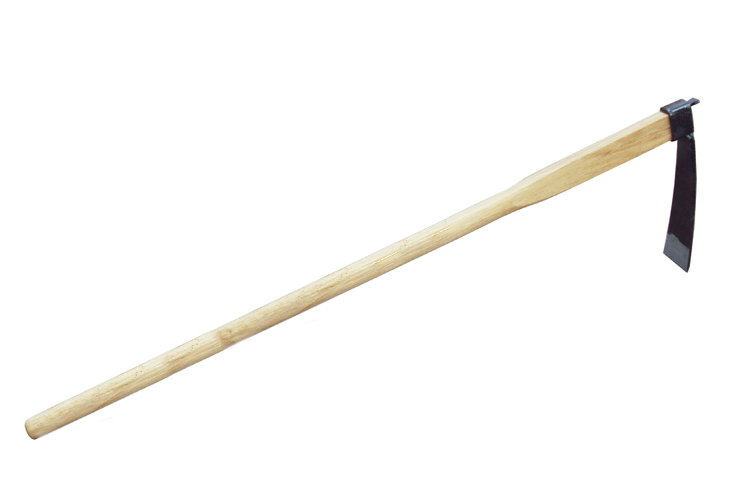 14. The Farmer’s Hoe The Farmer’s Hoe is one of the improvised weapons. The farmers who lived near the Shaolin Temple were not trained soldiers but would have been regularly caught up in the fighting action. All of the farmers would have used a hoe to till the ground, and it was an obvious weapon-in-the-making, with its stick end (like a pole) for blocking and striking and a sharp end (like a sword) for chopping and slicing.
14. The Farmer’s Hoe The Farmer’s Hoe is one of the improvised weapons. The farmers who lived near the Shaolin Temple were not trained soldiers but would have been regularly caught up in the fighting action. All of the farmers would have used a hoe to till the ground, and it was an obvious weapon-in-the-making, with its stick end (like a pole) for blocking and striking and a sharp end (like a sword) for chopping and slicing.
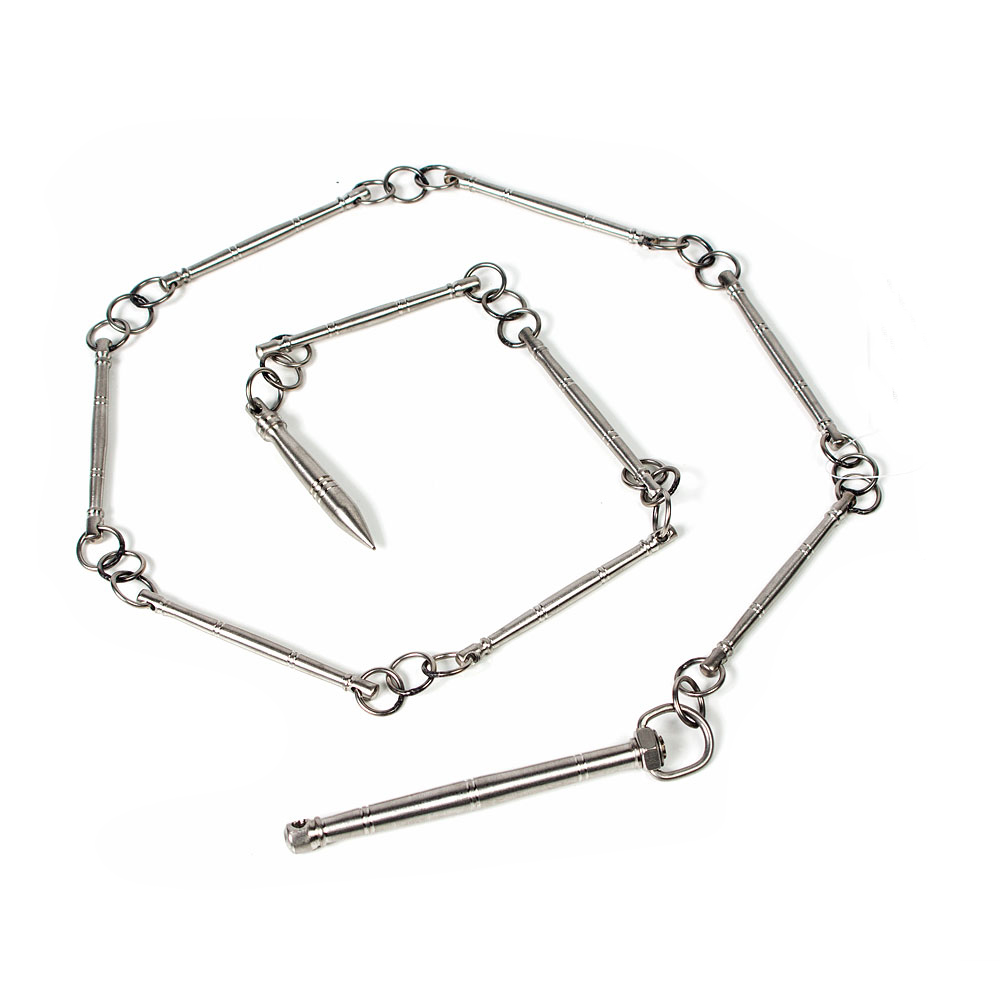 15. The Nine Section Whip The Nine Section Whip involves linked sections of metal on a swivel handle with a metal dart-like tip at the other end. The number of sections (nine) includes the tip but not the handle. The handle is shaped, to make it easier to grip, and made from leather to absorb sweat. The tip is another section of metal that is larger than the other links and of a similar weight to the handle. The length of the chain and the balanced weight of the handle and tip mean that the chain whip can be thrown up and then caught in one hand. Often practitioners will alter the length of the whip to suit their needs. For example, one may want the whip to be as long as the distance from the ground to their chin, or from the ground to the tip of the nose. Others may want to make the whip shorter so it is more useful for close-quarter fights. While the metal chain is heavy it is also flexible and can be used just like any other whip to hit, trap and bind an assailant and to deflect blows.
15. The Nine Section Whip The Nine Section Whip involves linked sections of metal on a swivel handle with a metal dart-like tip at the other end. The number of sections (nine) includes the tip but not the handle. The handle is shaped, to make it easier to grip, and made from leather to absorb sweat. The tip is another section of metal that is larger than the other links and of a similar weight to the handle. The length of the chain and the balanced weight of the handle and tip mean that the chain whip can be thrown up and then caught in one hand. Often practitioners will alter the length of the whip to suit their needs. For example, one may want the whip to be as long as the distance from the ground to their chin, or from the ground to the tip of the nose. Others may want to make the whip shorter so it is more useful for close-quarter fights. While the metal chain is heavy it is also flexible and can be used just like any other whip to hit, trap and bind an assailant and to deflect blows.
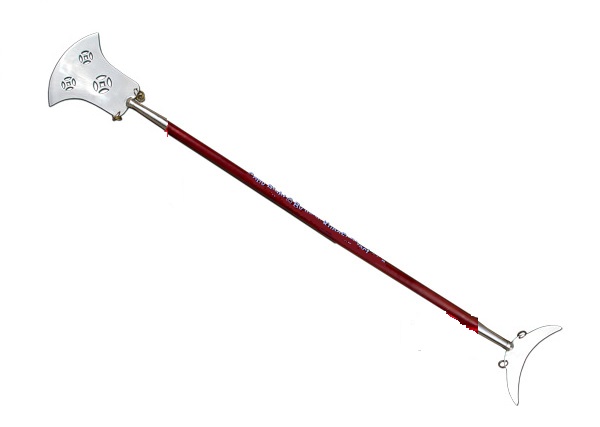 16. A monk's spade Is a Chinese pole weapon consisting of a long pole with a flat spade-like blade on one end and a smaller crescent shaped blade on the other. In old China, Buddhist monks often carried spades with them when travelling. This served two purposes: if they came upon a corpse on the road, they could properly bury it with Buddhist rites, and the large implement could serve as a weapon for defence against bandits. Over time, they were stylised into the monk's spade weapon.
16. A monk's spade Is a Chinese pole weapon consisting of a long pole with a flat spade-like blade on one end and a smaller crescent shaped blade on the other. In old China, Buddhist monks often carried spades with them when travelling. This served two purposes: if they came upon a corpse on the road, they could properly bury it with Buddhist rites, and the large implement could serve as a weapon for defence against bandits. Over time, they were stylised into the monk's spade weapon.



